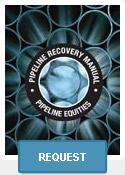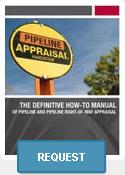Pipeline Equities
PO Box 571977
Houston, Texas 77257
Phone: 713-623-0690
Pipeline Recovery
excavation & removal
Damage Assessment
of easements
Pipeline Appraisal
pipeline property valuation
Pipeline Equities
PO Box 571977
Houston, Texas 77257
Phone: 713-623-0690
excavation & removal
of easements
pipeline property valuation
The best asset a pipeline owner can have is the original alignment sheets or “as built” document. This is basically a blueprint showing the exact route of the pipeline and virtually all the knowledge that existed for that pipeline when built.
Almost always along the top of the sheet is a landowner’s name and a space designating his ownership. On some documents it might indicate whether the land is forest or in cultivation. Other typographical features might be listed as well such as type of soil, hilly, rolling hills, wetlands, etc.
Generally along the middle section is a line or centerline of the actual pipeline on a scale of whatever is indicated. There are stations along the way indicated distance from the starting point to that “station”. These are important reference points as there also will be various crossings marked off designating oil and gas pipelines of varying sizes, water lines, sewer lines, underground cables, etc.
Sometimes there might be a more detailed explanation toward the last quarter of the sheet. The more detailed section might show if there are additional lines in the easement or corridor.
On the right hand side toward the bottom is sometimes a box that shows maintenance records showing the nature of repair replacement work and the date it was done.
More toward the bottom left there is usually a box that shows the description of the actual pipe laid. The description will include outside diameter of the pipe, grade, weight per foot and wall thickness as well as type of connection used to join the individual lengths or joints of pipe.
Usually the description section will include an area showing the type of coating on the pipe. This could be a tar and felt wrap with various designations such as TGF-3 or a Fusion Bond Epoxy type coating.
Alignment sheets tell the story of the pipeline and they are an invaluable set of documents for maintenance, recovery, or potential buyers.

Fill out the short form below to receive our Pipeline Recovery Manual.
Sign up for our free newsletter to receive your complimentary copy of our Pipeline Recovery Manual that explains our entire process for recovering or salvaging idled or abandoned pipelines.
You will see how we deal with landowners regarding notification and recordings. How to draft a contract of sale with models by: Exxon, Texaco, Koch and others and pictures showing actual work in process.
The manual shows Pipeline Equities job references, right of way releases, agreements and the history and background of Pipeline Equities and managing partner David Howell. These references touch on parts of the six million feet of line removed or handled by the company over the past twenty years.
A line pipe table describing various weights, grades, and pressure ratings of ERW and seamless line pipe is included. This section is an indispensable tool for anyone doing operational word with line pipe.
Also included are extensive glossaries of pipe, pipeline, and right of way terms.

Request a complimentary Pipeline Appraisal Handbook
Fill out this short form and you will be sent a confirmation link to our Newsletter. Once you click the link you will be subscribed to our newsletter and taken to a page where you can download the Pipeline Appraisal Handbook.
This handbook written by David Howell, managing partner of Pipeline Equities is the basic text of any pipeline valuation. All of the essential factors for establishing the value of a pipeline are discussed along with exclusive proprietary formulas and tables essential to a certified appraisal.
Also included are 32 pages of pipe weight and grades tables that cover virtually any situation which might be encountered regarding line pipe requirements. Additionally you’ll find an extensive glossary of pipe, pipeline and right of way terminology is part of the Handbook.
Subjects include: Replacement, Right of Way, Surface Inventory, Throughput, Salvage/Recovery, and comparable sales histories to name a few of the basic factors of pipeline appraisal.
The author recognized a need for a report or “how to” manual for properly appraising pipelines and pipeline right of ways. Currently the work is being done by accounting firms, engineers, and real estate appraisers.
Howell has forty-five years experience in many sectors of the petroleum industry from drilling contractor and oil and gas operator to pipe and supply distribution throughout the world. He has published Tradex Equipment magazine, the Whole World Oil Directory, and the Texas Oil Register.
For the past twenty years, Howell has been almost exclusively engaged in pipeline sales and acquisition, appraisal, removal for salvage, environmental remediation and general pipeline operations.
Howell currently serves on board of the Pipeline Appraisal Institute and is a member of the International Right of Way Association. Howell is a graduate of Texas A&M University – Kingsville and a native of Alice, Texas. He is currently residing in Houston and is the managing partner of Pipeline Equities.